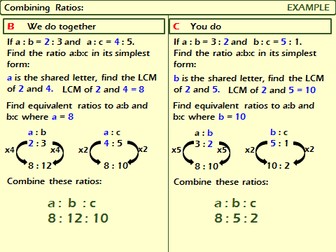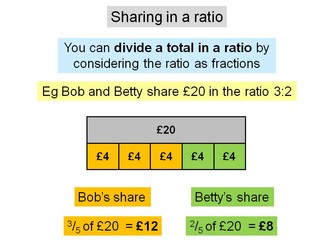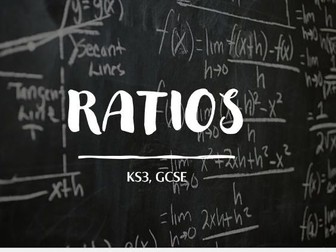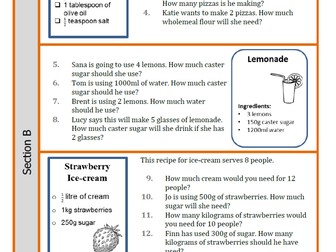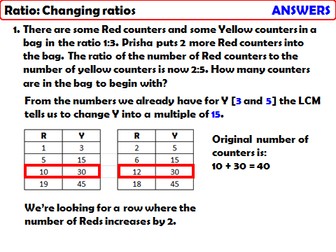
Ratio & Proportion!
Everything you need to teach year 7 - 10 ratio lessons!
All lessons contain:
5 a day starter,
learning objectives with progress tick sheet,
Fully animated and clear examples,
Differentiated, colour-coordinated questions WITH answers,
Lesson 1:
Introduction into ratio & proportion!
How to write and simplify ratios including in terms of 1:
Lesson 2:
Direct proportion using the unitary method!
Simple, clear examples with fun paired work main activity, great for all abilities. I often use it as a class timed activity to see which student can get the most points, works amazingly work quiet, challenging work!
Lesson 3:
Direct and inverse proportion using unitary method!
Clear examples of both proportion with functional questions of mixed direct and inverse questions.
Lesson 4:
Dividing a given amount into a ratio!
Functional questions and examples of diving into ratios with self assessment progress slide to finish.
Lesson 5:
Direct proportion with constant k!
Introduction into the constant k and it’s terminology. Questions include equations and tables. Fun code breaker to end.
Lesson 6:
Introduction into inverse proportion with constant k. Including equation and table style questions, also with code breaker from tes.
Bonus Lesson!
I have added in a group work lesson which I have found from tes which is about dividing amounts into a ratio in a bank robbery!
These are all my favourite lessons from the ratio topic and I hope you enjoy them too! If you like them or think I could improve them in anyway, please rate or comment!
Thanks =]

